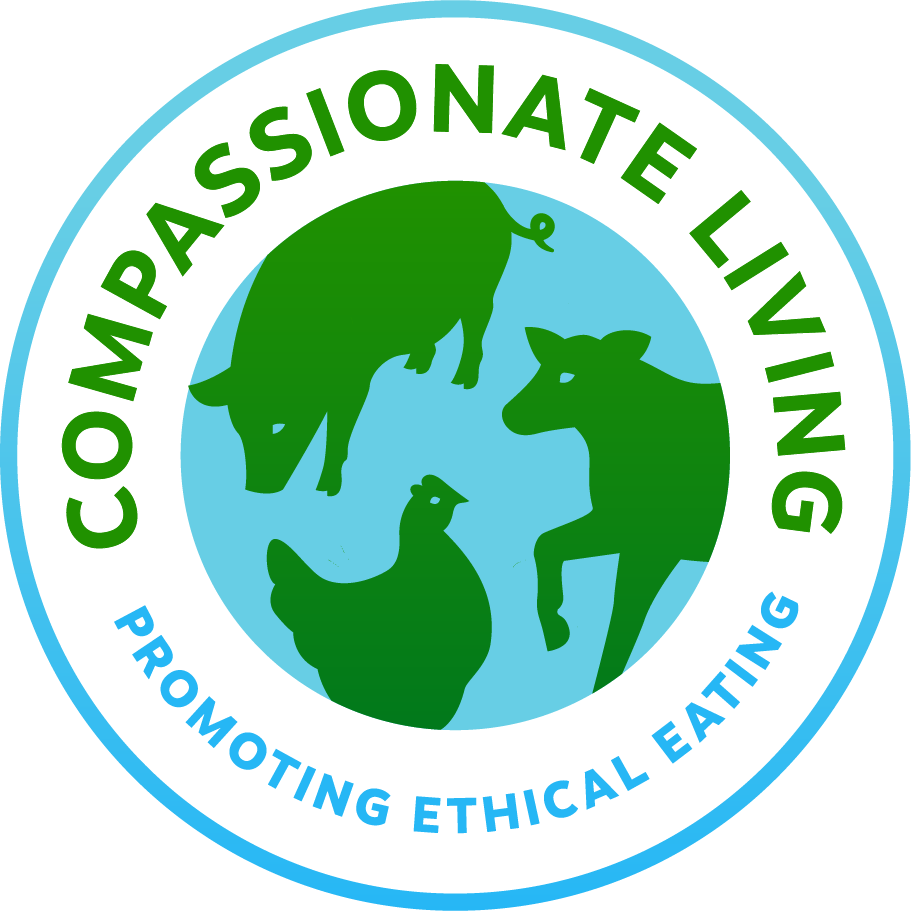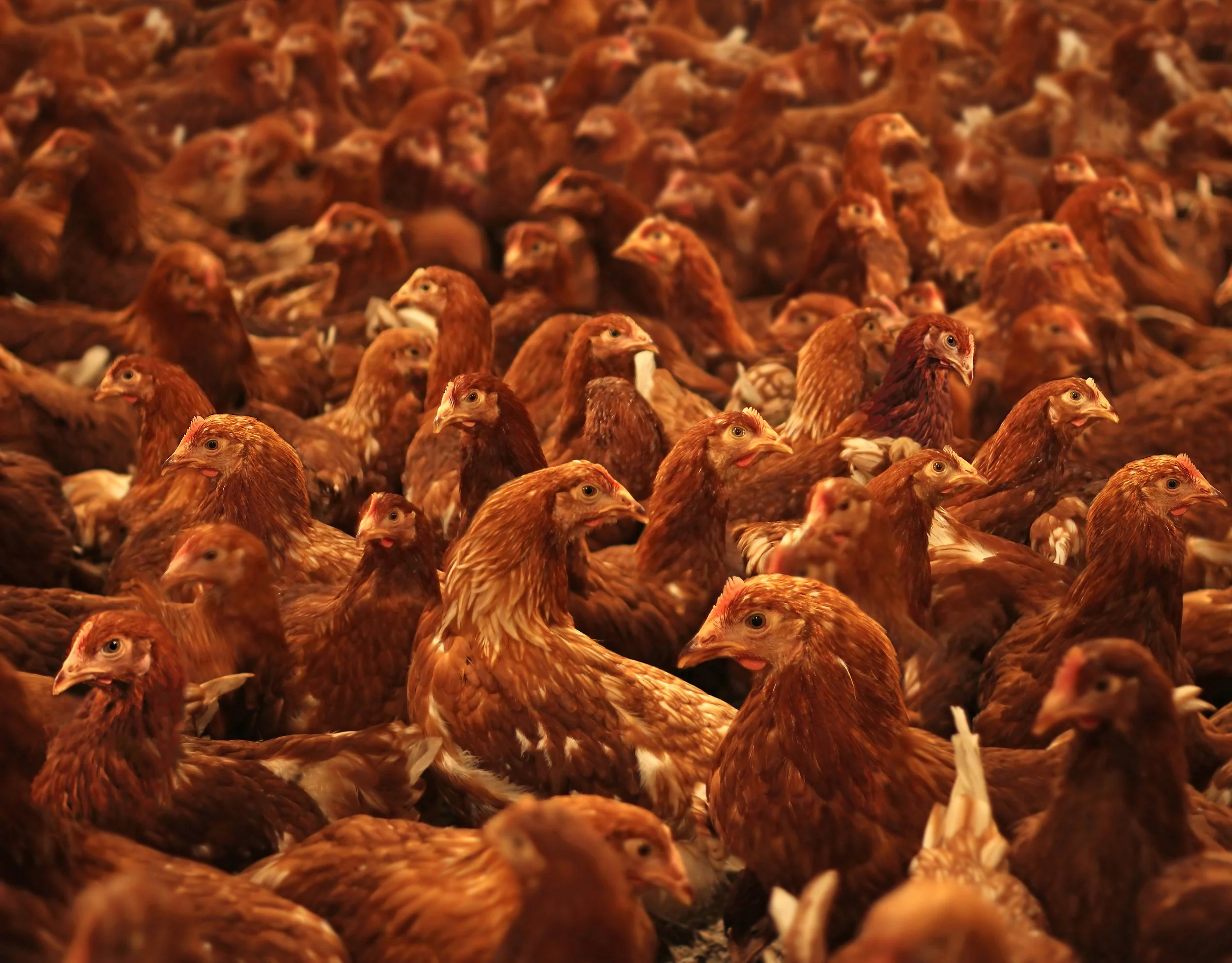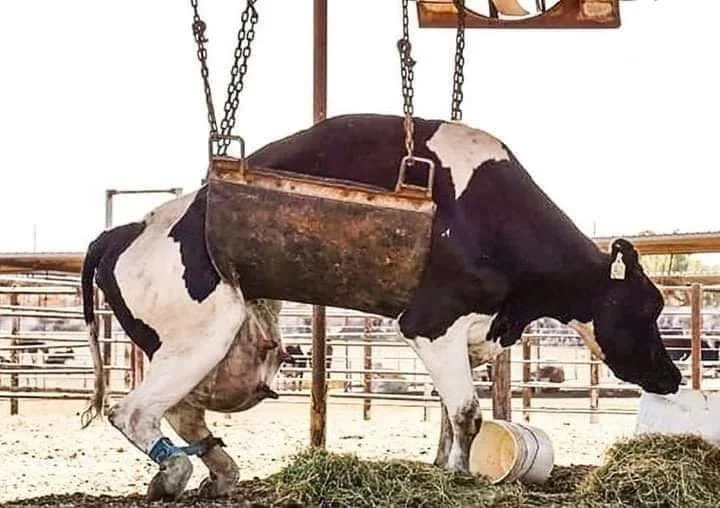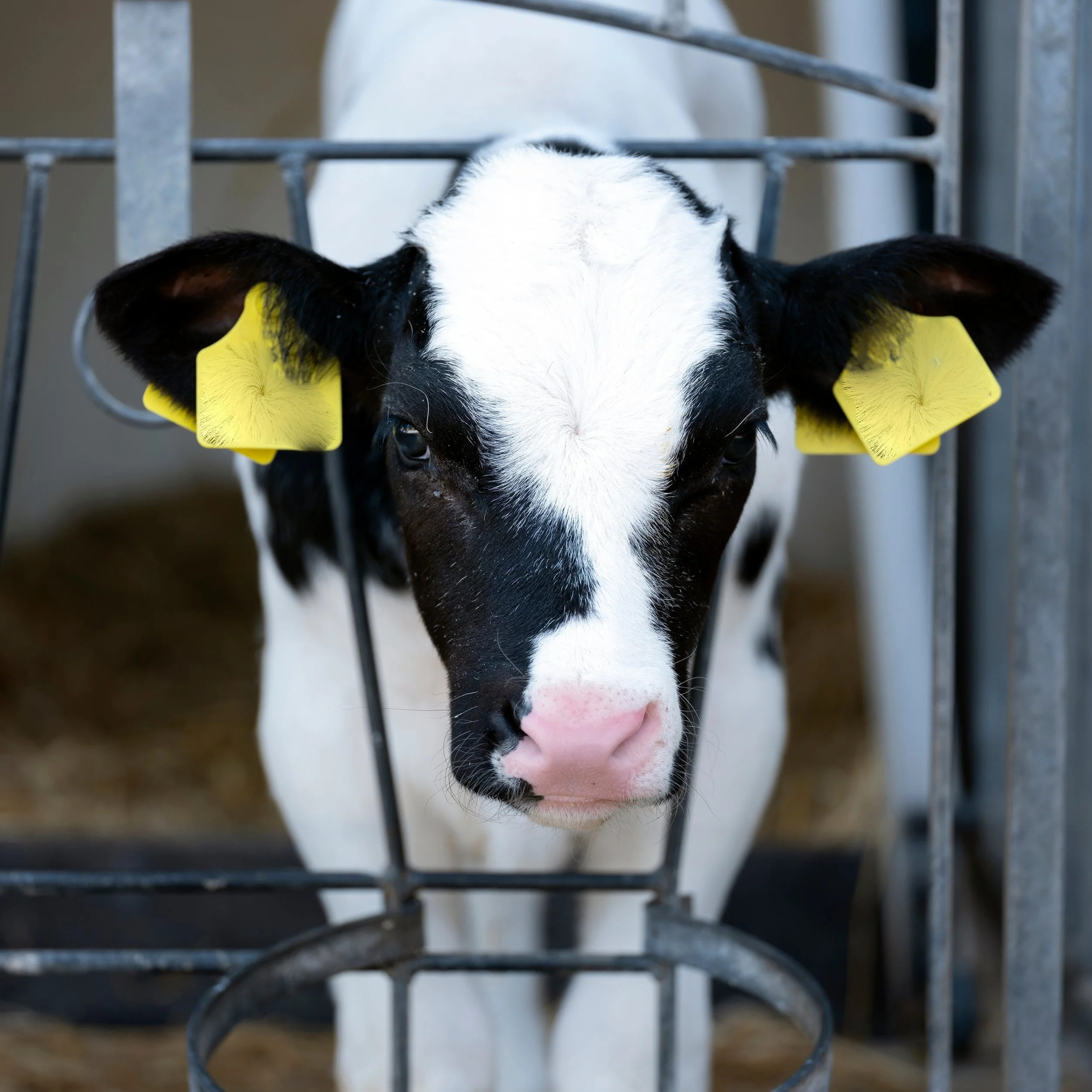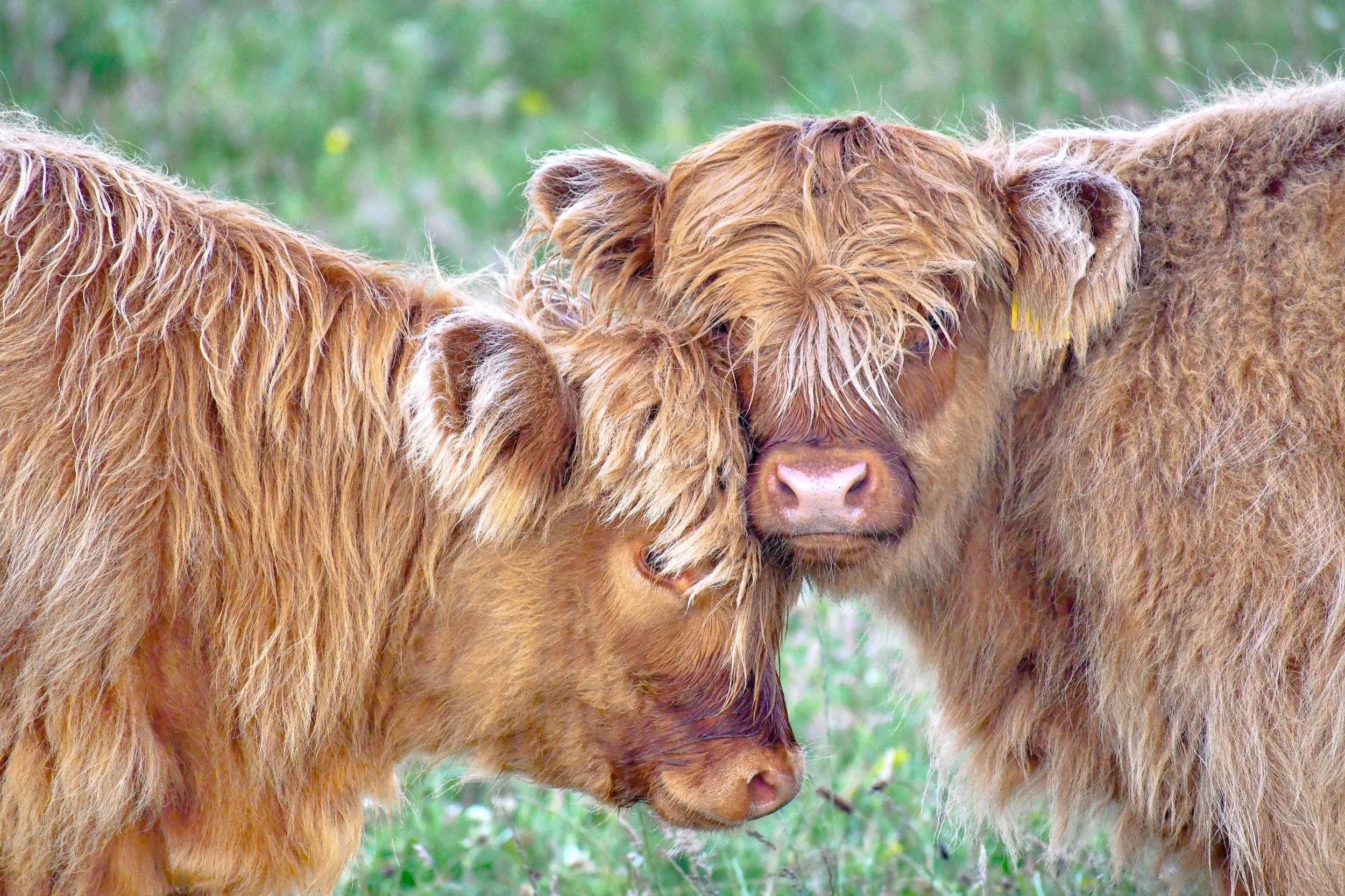
Farmed Animals
Chickens
In the chicken industry, “broiler chickens” are raised for meat and “layer chickens” for eggs. While a chicken’s natural life-span is about 10 years, broiler chickens are slaughtered at about 3 months, and a layer hen is lucky to see her 3rd birthday. Egg-laying hens are crammed in tiny wire-mesh cages with only about the size of a sheet of paper to live.
In these cramped conditions, natural, healthy behaviors like pecking, scratching and dust bathing are completely denied. There isn’t even room to stretch a wing. Cages are stacked on top of one another like shoe boxes in a windowless warehouse where the stench of ammonia from urine is overwhelming. Imagine your whole life stuck in a filthy, crowded elevator.
That is the life of a layer hen.
Labels like cage-free and free-range on chicken’s eggs and flesh are no better than conventional. Learn more about the humane hoax here.
All chickens and turkeys undergo the barbaric procedure of de-beaking where chicks only a few days old have the front portion of their beaks sliced off with a hot blade. No anesthetics are used. The British Parliament appointed a committee of veterinarians and other experts to investigate de-beaking. They concluded that, “between the horn and the bone of the beak is a thin layer of highly sensitive soft tissue. The hot knife blade used in de-beaking cuts through this complex horn, bone, and sensitive tissue causing severe pain.”
Male Chicks In The Egg Industry
Over 400 million chicks a year are born in industrial hatcheries. Half of these, of course, are male. The male chicks born to the layer hens don’t grow large enough to be profitably raised for meat.
They aren’t very good at laying eggs either so they are considered a useless byproduct of the industry. These 200 million newly hatched chicks are “disposed of.”
A convenient and widely practiced method of killing them is to toss the chicks into plastic garbage bags and throw them out with the trash, or shovel them into dumpsters where they slowly suffocate, dehydrate and starve. Some hatcheries have made this horror profitable by throwing live chicks into a grinder to become fertilizer or pet food.
“Disposing of male chicks is an everyday practice. There are at this moment dozens of hatcheries in the US with trash bags full of struggling, suffocating baby male layer chicks.” - Erik Marcus, Vegan: The New Ethics of Eating.
Cow Dairy
Like all mammals, female cows only lactate when pregnant. To maximize milk production, dairy cows are kept pregnant their entire short life. A cow’s natural life span is about 20 years but in animal agriculture, the stress on a cow’s body will diminish her milk output after about 2 or 3 years. She is then what the industry terms “dried up” or “spent.”
At this point, it is cheaper to simply replace her so she is typically sent to slaughter where her body is sold for ground beef and other low quality meats.
Each year, dairy cows are artificially inseminated on what the industry terms a “rape rack.” To insure the highest profit, when her precious calf is born, he or she is taken away from the mother cow immediately after birth. Even in seemingly “alternative” or “humane” dairy production, to maintain a profit, calves are taken away from their mothers and spent cows are sent to slaughter at a fraction of their natural lifespan.
Mother cows have been known to break down the stall in an attempt to find their offspring. Imagine for a moment being kept pregnant every year of your life, just to have every baby taken away from you and your milk pumped into machines.
What happens to the baby cows? A female calf will usually follow in her mother’s hoof-prints, yet she will never know her mother or suckle her milk, being raised on a bottle formula. She is kept confined or chained in “calf hutches” frightened, sad and alone.
A male calf born to a dairy cow is the wrong breed to profitably be raised for beef. He is considered a “byproduct” of the dairy industry and many male calves are killed for veal. Veal is the soft, pale, anemic flesh of a calf. Most veal calves are kept inside in crates barely bigger than themselves.
Chained at the neck, they can’t even turn around. They are fed a liquid diet deficient in iron, so their muscles can’t develop properly. These babies never see their 1st birthday. Many people recognize the cruelty in raising veal and will not eat it, yet are unaware of the intimate connection between the dairy and the veal industry. Supporting one supports the other.
A Compassionate Conclusion
Farmed animals present us with an exceptional opportunity. We can turn away from their suffering, or we can learn to express our own compassionate nature and experience the depths of our own humanity.
We can ignore the obvious violations inflicted on these animals, or we can become something new, a non-violent society that is more generous and kind. Please boycott this cruel industry and don’t buy meat, dairy or eggs.
